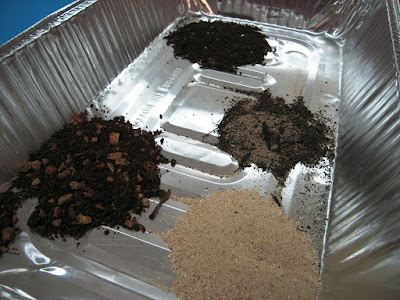We had a very successful Day 1.
 Kathy Yuknavage, Natural Resource Planner at CRM and MINA Secretary, helped us kick off the week long camp by making a presentation on the terrestrial portion of the Micronesia Challenge. She talked to the students about the 20%, how much land the CNMI already has in protected areas, and how much of that land is in forested areas.
Kathy Yuknavage, Natural Resource Planner at CRM and MINA Secretary, helped us kick off the week long camp by making a presentation on the terrestrial portion of the Micronesia Challenge. She talked to the students about the 20%, how much land the CNMI already has in protected areas, and how much of that land is in forested areas.She also made a presentation on the Walk It, Don’t Drive It Campaign. The students learned about the different reasons not to D.R.I.VE. on the beach: Driving on the beach Drips oil, creates Ruts, Impacts the sand, and kills Vegetation.
 After the presentations by Kathy we did an energizer/ice breaker. We played boffer tag.
After the presentations by Kathy we did an energizer/ice breaker. We played boffer tag.Our first activity was an experiment to determine how many germs are on our hands when we eat. We took a slice of bread and had someone handle it who hadn’t washed their hands. We put the bread slice in a zip lock bag and put it aside. We repeated this with slices of bread that had been handled by someone who had washed their hands with water only, who had washed their hands with soap and water, and who had washed their hands with hand sanitizer only. We also repeated the experiment with someone who had used soap & water, but who had only lathered for 10 seconds, 30 seconds, one minute, two minutes, and three minutes.
 We'll take a look at them again on Friday.
We'll take a look at them again on Friday. We are going to record some environmental PSAs for the local radio station on Thursday. We gave the kids some time to start writing them. Some of the students are writing scripts, some are writing songs, and others just wrote first person dialogues.
We are going to record some environmental PSAs for the local radio station on Thursday. We gave the kids some time to start writing them. Some of the students are writing scripts, some are writing songs, and others just wrote first person dialogues. Then we used a chemistry kit that taught the kids about the scientific method. It came with known and unknown chemical liquids that when mixed, changed color. The students mixed the known liquids and made observations of the changes. Then using those results, they tried to determine the content of the unknown liquids.
Then we used a chemistry kit that taught the kids about the scientific method. It came with known and unknown chemical liquids that when mixed, changed color. The students mixed the known liquids and made observations of the changes. Then using those results, they tried to determine the content of the unknown liquids.In typical Beautify CNMI fashion, lunch was provided on a shoestring budget. We fed the kids P&J sandwiches, apples, and water.
 After lunch, Brad Doerr, a MINA member and local retiree, came in to talk to the students about tree care & propagation. He brought in different samples of soil, showing them the difference between sand, clay, limestone, and organic soil. He showed the kids how to plant a seed, showing them how seeds can be many different sizes. He also brought in some month old Flame Tree saplings and showed the students how to transfer trees from a smaller pot to a larger one.
After lunch, Brad Doerr, a MINA member and local retiree, came in to talk to the students about tree care & propagation. He brought in different samples of soil, showing them the difference between sand, clay, limestone, and organic soil. He showed the kids how to plant a seed, showing them how seeds can be many different sizes. He also brought in some month old Flame Tree saplings and showed the students how to transfer trees from a smaller pot to a larger one. He also showed them how he uses organic waste to create compost at his house in As Matuis.
He also showed them how he uses organic waste to create compost at his house in As Matuis.
After lunch we had a few more energizers (stolen from the clubmates at PIC) and then did a project on watershed pollution. Bree laid out four large sheets of white paper and then drew a non-linear line down the length of the paper, separating what would eventually be land and water.
She broke the students into four groups and had them paint on the ocean and the land, painting in the type of development they would like to see on the land. The students drew houses, agriculture, roads, hotels, ponding basins (!), pastures, and even a horse farm.
 When they were finished we put the four posters back together and discussed how the different types of development would affect the marine environment and how one poster would affect the others. The kids were able to identify that the agriculture would result in pesticides and fertilizers running into the water, that the roads would result in erosion and increased runoff, and so on and so on.
When they were finished we put the four posters back together and discussed how the different types of development would affect the marine environment and how one poster would affect the others. The kids were able to identify that the agriculture would result in pesticides and fertilizers running into the water, that the roads would result in erosion and increased runoff, and so on and so on.Mylene also wrote about Day 1 on her blog, Mylene Rocks.
No comments:
Post a Comment